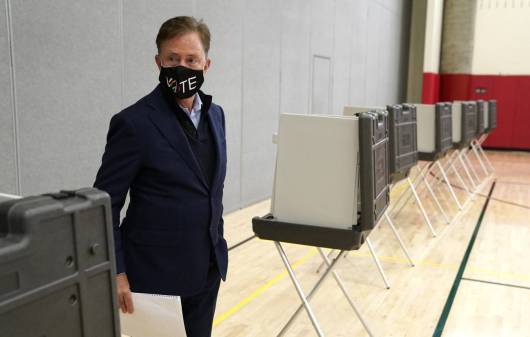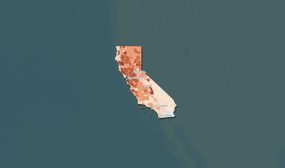Wildfire tech, cybersecurity upgrades in California’s 2020 budget

While the $222 billion budget proposed by California Gov. Gavin Newsom focuses most prominently on addressing the state’s shortages of teachers, housing and health care, it also includes several new allocations for technology programs that promise to improve network security and augment emergency response for a state with an ever-widening wildfire season.
The governor’s statement opening his budget proposal for the 2020-21 fiscal year struck a tone between urgency and a long view of the state’s well-being.
“These problems—catastrophic wildfires and their impacts, the expanding homelessness crisis, and growing inequality of opportunity—have been decades in the making and won’t be fixed overnight,” Newsom writes. “California can and must do more to tackle these challenges and fortify our future.”
A big boost for Cal Fire
The California Department of Forestry and Fire Protection, or Cal Fire, would get an additional $120 million next year, rising to $150 million in subsequent years for additional resources, including hiring new firefighters and adding more engines to to the state’s firefighting fleet.
But the plan also proposes several new investments in digital technologies that can be used to prevent or contain wildfires, including an increased use of data taken from light and detection and ranging, or lidar, systems “to better inform resources management and hazard assessment decisions.”
The budget also proposes the creation of a new Wildfire Forecast and Threat Intelligence Integration Center to analyze wildfire risk, a collaboration between the California Department of Technology, the state Office of Emergency Services, the California Public Utilities Commission and the California Military Department.
California State University, San Marcos would receive a one-time $5 million grant “to study enhanced firefighting equipment and strategies to protect firefighters from the conditions present during wildfires in the wildland urban interface.”
“Our heroic emergency personnel and firefighters put out more than 7,800 fires last year—thanks in many cases to prepositioned assets and the newest weather technology,” Newsom’s writes. “But wildfires fueled by climate change continue to threaten our people and our way of life. The Budget builds on this record investment by expanding firefighting technology and personnel.”
Those investments would pile onto two experimental firefighting technologies now being tested: software that predicts where active blazes will spread and an ignition-detection system that relies on aerial sensors. Those contracts were announced last September as the first to make use of a new lightweight procurement vehicle developed by Newsom, called RFI2, or a “Request for Innovative Ideas,” enabling the state to adopt new technologies more quickly.
Expanded cybersecurity operations
Statewide cybersecurity operations would receive $38.8 million in ongoing funding, including 85 positions “to strengthen the state’s information technology security operations.” Some of these positions already exist while others would be created, a state official told StateScoop.
“The Administration is committed to protecting the state’s critical information assets and infrastructure, which includes personal data,” the budget proposal states. “The Budget provides funding to mature the state’s overall security posture, improve statewide information security initiatives, analyze cyber threat intelligence, and respond to and mitigate potential threats.”
The California Department of Technology’s major program changes include a $5.1 million allocation to improve endpoint protection on the state’s computer networks, allowing some agencies to “safely transition from legacy antivirus systems to endpoint protection contracts with minimal disruption.” Another $15.1 million would allow several dozen existing information security positions to rely on general funding, rather than CDT’s charge-back model, thereby ensuring the state’s security operations center and information security program audits would not need to rely on fluctuating agency budgets from which CDT currently receives fees to keep those programs running.
DMV and digital services
The California Department of Motor Vehicles, which has struggled with its computer systems in recent years, will receive an extra $200 million, mainly to address long-term systems upgrades and provide temporary staffing as the state faces an October deadline for Real ID.
“As of December 2019, the DMV hired an additional 926 temporary employees, and wait times, once exceeding several hours, have returned to target levels at most field offices throughout the state,” the budget states.
While it doesn’t outline any specific line-items in this year’s budget, Newsom’s plan highlights the progress the state has made in improving its service delivery with technology and urges a “cultural shift” in which state government is more responsive to residents’ needs and tracks outcomes.
Newsom points to last year’s creation of the Office of Digital Innovation, a redesign of CA.gov, the launch of a geographic information systems portal and the new procurement process as examples of California’s improving digital services.






